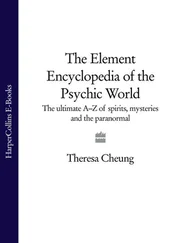This brings us to two basic terms from the Czech beer world: desítka and dvanáctka .
The first means ten-degree beer and the latter twelve-degree beer, and both correspond to the two main types that are consumed in this country. Many people, including lots of native Czechs, confuse this marking with the alcohol content, which is actually a big mistake. The term desítka means that the beer contains 10 percent (or degrees, as the brewers used to say) extract of the original young beer, while the dvanáctka has twelve percent.
Thus, the latter, containing about 5 percent alcohol, has a fuller taste and a stronger flavour of hops than the former, which normally has 3 percent alcohol. In other words, Czech beer, in both of its main versions, is relatively weak in alcohol, but is compensated by its rich flavour.
Beer is also an inexhaustible source of debates (and sometimes even black eyes) in this country. Questions such as, “Has Plzeňský Prazdroj reached at a higher level of beer evolution than Budějovický Budvar?” (it hasn’t!), or “Should beer bottles (yes, bottles! Only stupid foreigners buy canned beer) be stored on the seventh or on the eighth stair in the cellar staircase?” are treated with the utmost seriousness by any true pivař . Most of them will even claim that beer is one of your health’s best friends. Which, actually, is not all that untrue.
Most of us have already experienced that our hair gets shinier when we wash it in beer, and even the wildest hair-do can be tamed by a few drops of beer (famous as the Pilsner Ur-gel ). You might have also noticed that beer is strongly diuretic, so it helps cleanse your kidneys and bladder of detritus. But did you know that beer also contains an incredible amount of minerals, ranging from potash and sodium to chloride, phosphorus, magnesium and silicon, plus all the most important substances in the vitamin B family? Or that some Czech spas even recommend a bottle of beer daily to fight coronary disease?
Perhaps there’s no need to blow up the doctor’s usual message that beer has a positive effect on your physiology only as long as it’s consumed in “moderate” quantities. And you’re probably aware of the fact that a desítka contains about 380 calories and a dvanáctka no less than 460 calories. Instead, remember Jára Cimrman’ssomewhat sexist, but still widely respected words of wisdom: “ Teplé pivo horší než studená ženská!” — Warm beer is worse than a cold woman!
To a Czech ear, this frequently used slang abbreviation of “Bratislava” sounds very close to a combination of the two words bláto (mud) and kráva (cow). If this makes you believe that the Czechs tend to regard neighbouring Slovakia’s capital as a somewhat dull and uninteresting place, you’re exactly right. Small but romantic Bratislava on the Danube is a city most Czechs take great pride in not visiting.
One can, of course, perfectly understand that the Czechs after the Velvet Revolutionand 40 years of isolation started exploring foreign countries instead of their own country, but the ostentatious ignorance and belittling of Bratislava is a quite evident expression of the Czech paternalism that enraged the Slovaksin the Czechoslovak era.
And it’s also a bit comic, since the Slovak- Hungarian- German- Jewishcity Pressburg (or Pozsony) in 1918 actually was renamed Bratislava ( brať — brother, slava — glory) as a tribute to the eternal brotherhood between the Czechs and Slovaks.
As the story goes, the Czechs descent from a Slavonic people who, in the sixth century, were led to the area of today’s Bohemia by the legendary chief Čech and his younger brothers Lech and Mech. After having trudged thousands of kilometres from the Slav heartland somewhere by the Dnepr, old Čech commanded his exhausted tribesmen to climb Říp, a hilltop visibly resembling a woman’s breast (see: Sex).
From this 500-meter high elevation not far from the Elbe River in Central Bohemia, indescribably beautiful scenery opened up in front of the newly-arrived Slavs. Not surprisingly, they immediately decided to stop roaming about, and to settle down on the gorgeous plains beneath them, which they called Čechy in honour of their wise chief.
Strictly speaking, it’s more than dubious that great chief Čech ever lived (actually, there is also a chief called Čech in Croat mythology). The unromantic truth is that the name of the country is probably connected with the Polish word czachy (dry), which described the quality of the land between Labe (Elbe) and Vltava (Moldau) rivers.
However, what’s not disputed at all is that the land that was settled by the Czech Slavs in the sixth century had earlier been inhabited by Celts. In the period 200-100 before Common Era Celtic tribes established numerous settlements, ritual buildings, burial sites and fortified villages, or oppida , all over the Czech lands. You can still find the remnants of one such magnificent oppidum only a few kilometres south of Prague, at Závist on the banks of the Vltava.
The Celts were kicked out of what are now the Czech lands by the Germanic Marcomannis several decades before Common Era, and if they had only left inventions such as the potter’s wheel, the circular mill, some coins and an apparently eternal craze among the Czechs for everything Celtic, they wouldn’t have deserved to be mentioned in this country’s history with more than a couple of words.
Yet the Czechs can thank the Celtic Boiohaemum tribe for one basic contribution to their cultural history: the name Bohemia — the term most countries in the worlduse when speaking about the part of the country that the Czechs themselves call Čechy .
Needless to say, not all Czechs are too enthusiastic about this term. Ever since the French author Henri Murgers published his Scenes from Life in Bohemia in 1848, decent citizens have considered Bohemians to be painters, writers, poets and similar good-for-nothings, who don’t feel bound by “ordinary” moral conventions. True, the Czech lands have certainly never lacked people in this category, but, still, isn’t it a bit unfair to deem several million Czechs as morally devastated Bohemians?
To avoid this embarrassing confusion, some reputation-wary Czechs have come up with a sweet, pseudo-scientific explanation:
“Yes, it’s correct that the Bohemians who came to France in the early nineteenth century drank and copulated far more and worked and went to church far less than they should have. But these people were actually not Czechs — they were Roma! In England they claimed to be of (E)gyptian origin, in Spain and the Czech lands, they claimed to be Flamencos (Flemings). Now, they use the same trick in France by saying they are Bohemians!”
But you know better: the original Bohemians were neither Czech Slavs nor Roma. They were Celts!
In Bohemiaand Moravia, bureaucracy was booming already when the Czechs were a part of the Austro-Hungarian Empire (that’s where they were originally infected by the disease). It got even worse under the communists, and notwithstanding all promises made by the politiciansafter 1989, the situation hasn’t improved any much after the Velvet Revolutioneither.
The rule of the red tape is, admittedly, nothing exceptional in Central Europe. One might even say that this is perfectly normal in a country that has fostered both Franz Kafkaand The Good Soldier Švejk. And indeed, Czech bureaucracy’s tentacles can from time to time behave in a way that makes a poor citizen (not to mention a foreigner) a part of the same all-mighty and incomprehensible machinery as Kafka’s hero [1]Josef K.
Читать дальше
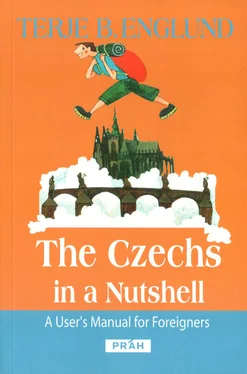
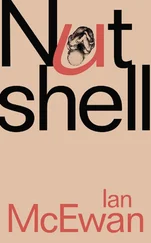
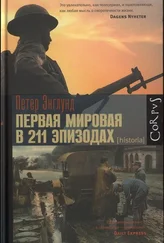

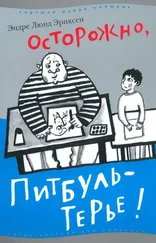
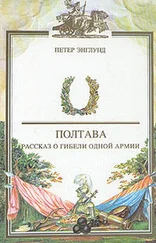


![Theresa Cheung - The Dream Dictionary from A to Z [Revised edition] - The Ultimate A–Z to Interpret the Secrets of Your Dreams](/books/692092/theresa-cheung-the-dream-dictionary-from-a-to-z-r-thumb.webp)


